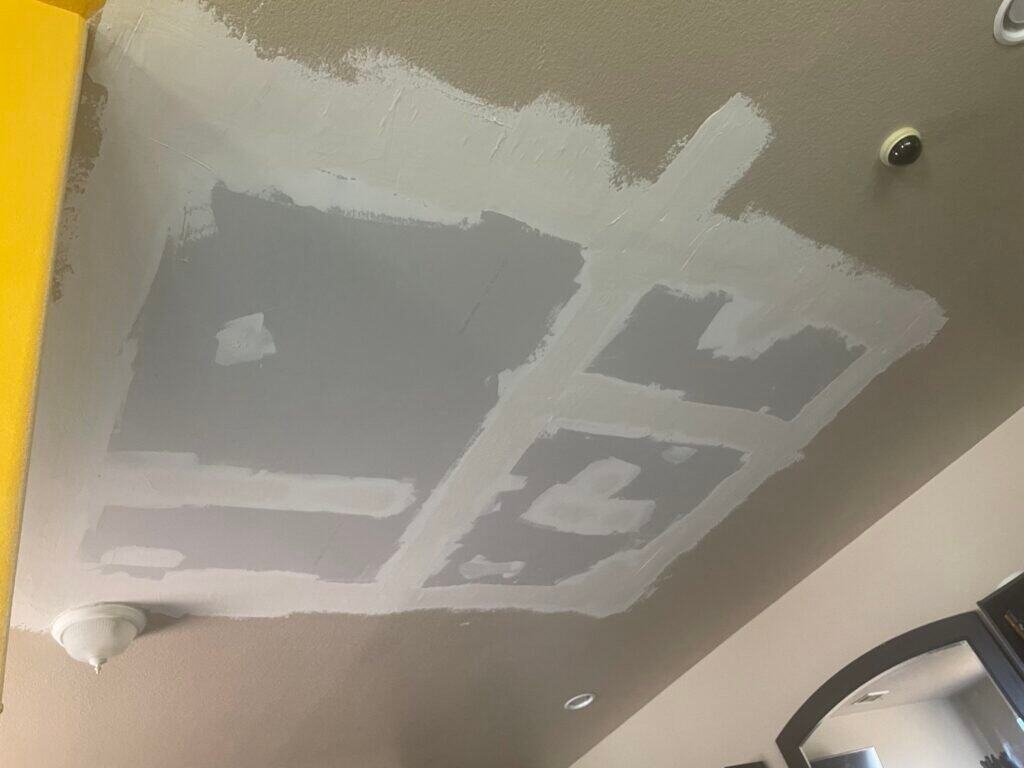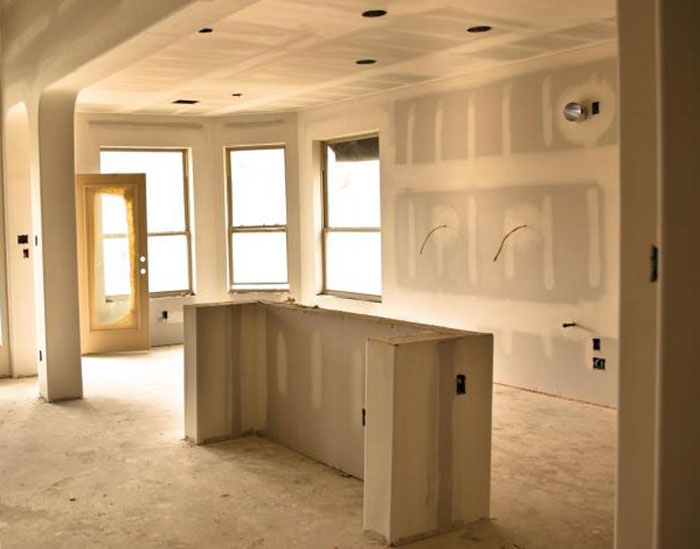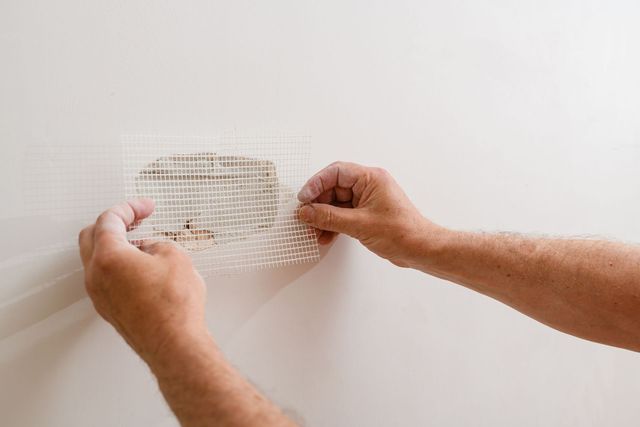Step-by-Step Approaches to Achieving Flawless Drywall Fixing and Installation
Attaining flawless drywall fixing and installation needs an organized technique. It involves understanding the various kinds of drywall and the tools required for the job. Appropriate location prep work is crucial prior to starting any job. drywall contractors. Each step, from covering openings to installing brand-new sheets, demands focus to detail. The procedure does not end with installation; completing techniques are essential for a polished appearance. The next steps will guarantee a seamless outcome, but just what do they entail?
Recognizing Drywall Types and Equipment Needed

The installation devices are similarly essential. An energy knife is important for cutting drywall sheets, while a drywall saw can aid in making accurate cuts for electrical outlets or components. T-squares guarantee precise measurements, and drywall screws or nails safeguard the panels to wall studs. Additionally, a drywall lift can help with the installment of large sheets, decreasing physical strain. Experience with these tools and kinds appreciably adds to the performance and top quality of drywall tasks.
Preparing the Location for Repair or Setup
Preparing the location for drywall fixing or installation is crucial to assure a efficient and smooth process. The surrounding area must be removed of furniture and other obstacles to provide sufficient functioning area. This not just assures safety yet likewise avoids damage to items. Next off, it is important to cover the floor with ground cloth to capture any particles or dirt created throughout the job.
In addition, the wall surfaces must be checked for any type of loose paint or wallpaper that may conflict with attachment. Eliminating these components produces a clean surface area for the brand-new drywall. Before beginning, it is advisable to shut off power to electric outlets or fixtures in the vicinity. Ensuring ample illumination in the work area will certainly even more enhance exposure and focus during the repair service or installment procedure. Drywall Repair Ogden UT. By meticulously preparing the location, one prepares for an effective drywall job
Step-by-Step Process for Patching Holes

Patching holes in drywall needs an organized approach to ensure a smooth repair. The very first step entails evaluating the size of the hole. For small holes, a patching compound may be sufficient, while bigger openings require a spot. Next, the damaged area ought to be cleansed and prepared by removing any type of loose debris.
For tiny holes, using spackling compound with a putty blade is advised, smoothing it over the hole and feathering the sides. Once completely dry, fining sand the location assures a smooth coating. For bigger openings, a drywall patch ought to be cut to size, placed over the opening, and safeguarded with screws. After mounting the spot, the exact same spackling process is repeated, followed by sanding.
The patched location has to be topped and repainted to match the bordering wall. This careful process guarantees a professional appearance and prolongs the lifespan of the repair work.
Setting Up New Drywall Sheets: A Comprehensive Guide
Installing new drywall sheets calls for cautious planning and execution to guarantee a visually enticing and tough coating. Initially, the area needs to be gauged precisely to establish the variety of sheets needed. It is crucial to select the ideal thickness, usually 1/2-inch for indoor walls and 5/8-inch for ceilings or fire-rated applications.
Next, the studs or structure need to be inspected for any type of abnormalities, making certain they are aligned and appropriately spaced. When placing the drywall sheets, they ought to be placed horizontally to decrease seams and boost architectural integrity. A drywall lift can be beneficial for overhead installments.
Fastening the sheets with drywall screws at ideal intervals ensures a safe installation. It's crucial to countersink the screws slightly listed below the surface to get ready for the ending up click here process. Complying with these standards will bring about a solid foundation, all set for the next steps in drywall finishing.
Finishing Touches: Taping, Mudding, and Sanding Techniques
Once the drywall sheets are securely fastened, the focus changes to the complements that will certainly give a polished appearance. This procedure begins with taping, utilizing either paper or fiberglass fit together tape to cover the seams in between sheets. The tape guarantees a smooth change, lowering the danger of breaking. Following taping, mudding is important; a joint compound is applied over the tape to load gaps and create a smooth surface area. Generally, several layers are essential, every one feathered out additionally than the before decrease presence.
After adequate drying time, sanding is the last action in attaining a perfect coating. A fine-grit sandpaper is utilized to smooth the dried substance, ensuring there are no bumps or flaws. Focus to detail during this stage is substantial, as it considerably influences the total look of the wall surface. The end result need to be an even, professional-looking surface area prepared for priming and painting.
Often Asked Inquiries
Exactly how Do I Choose the Right Drywall Density for My Task?
To select the right drywall density, think about the task's purpose, place, and structural demands. Criterion densities include 1/2-inch for general use and 5/8-inch for fire-rated applications, making sure longevity and compliance with building regulations.

Can I Mount Drywall Over Existing Drywall?
Yes, setting up drywall over existing drywall is possible. However, it is crucial to assure the underlying surface area is secure and cost-free from damage. Appropriate attachment and consideration of thickness are necessary for an effective installment.
What Are the Best Practices for Drywall Disposal?
The best practices for drywall disposal include recycling when possible, utilizing local waste management services, and following guidelines for hazardous products if relevant. Interior Painting. Effectively identifying and sealing waste guarantees compliance and safety throughout disposal
How much time Should I Wait On Mud to Dry Before Sanding?
Typically, one need to wait 24 hr for drywall mud to completely dry before fining sand. However, drying time can differ based on humidity and temperature level, so checking for a company texture is a good idea before continuing.
Are There Eco-Friendly Drywall Options Available?
Yes, eco-friendly drywall choices are available. These choices typically make use of recycled products, low-VOC adhesives, and lasting production methods, reducing ecological effect while giving effective insulation and toughness for various building and improvement tasks.
An utility knife is important for reducing drywall sheets, while a drywall saw can help in making accurate cuts for outlets or fixtures. Preparing the area for drywall repair work or setup is crucial to assure a smooth and reliable procedure. Covering openings in drywall calls for an organized strategy to assure a smooth fixing. Installing brand-new drywall sheets calls for mindful planning and implementation to guarantee a durable and visually attractive surface. Yes, installing drywall over existing drywall is possible.